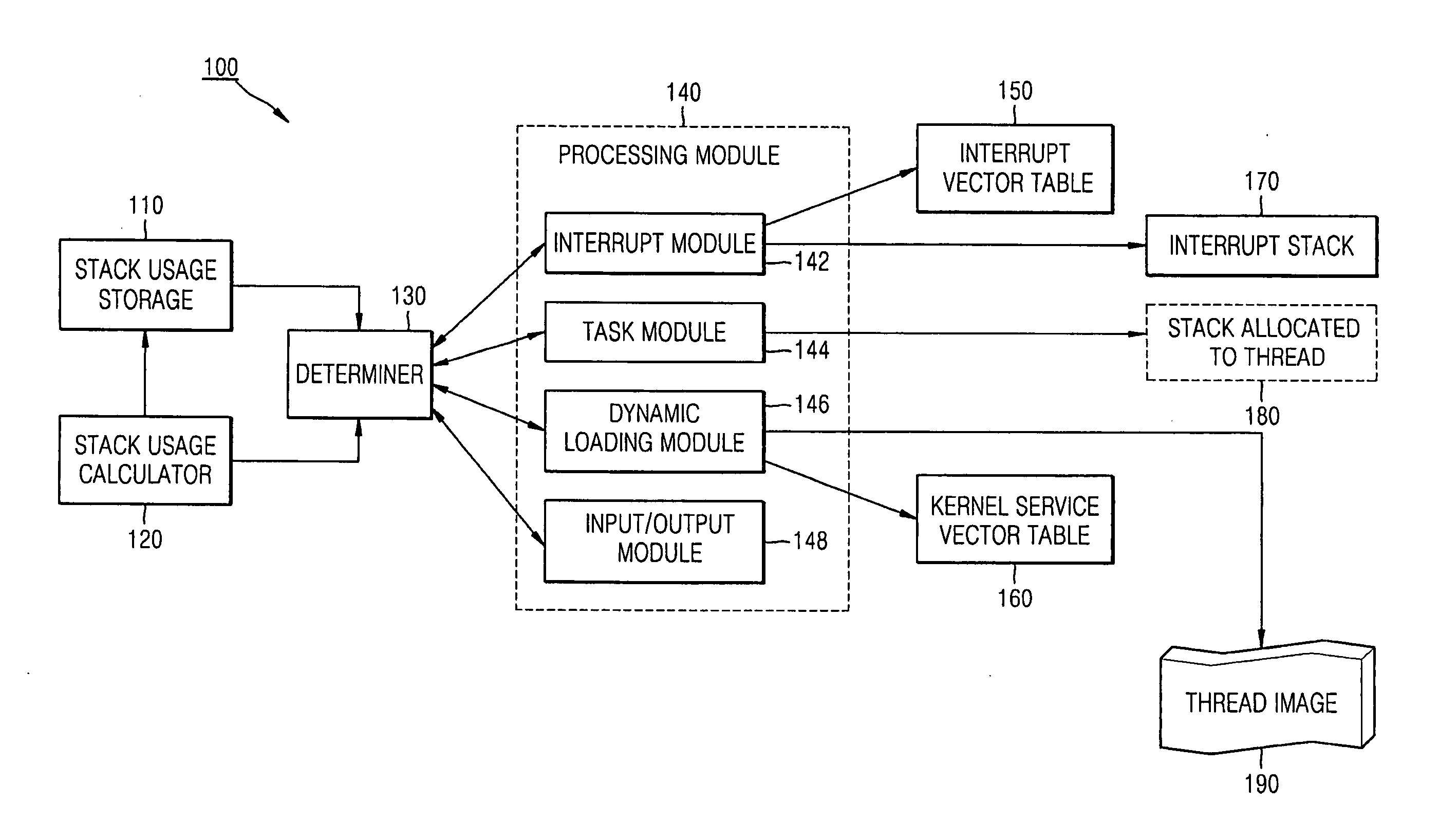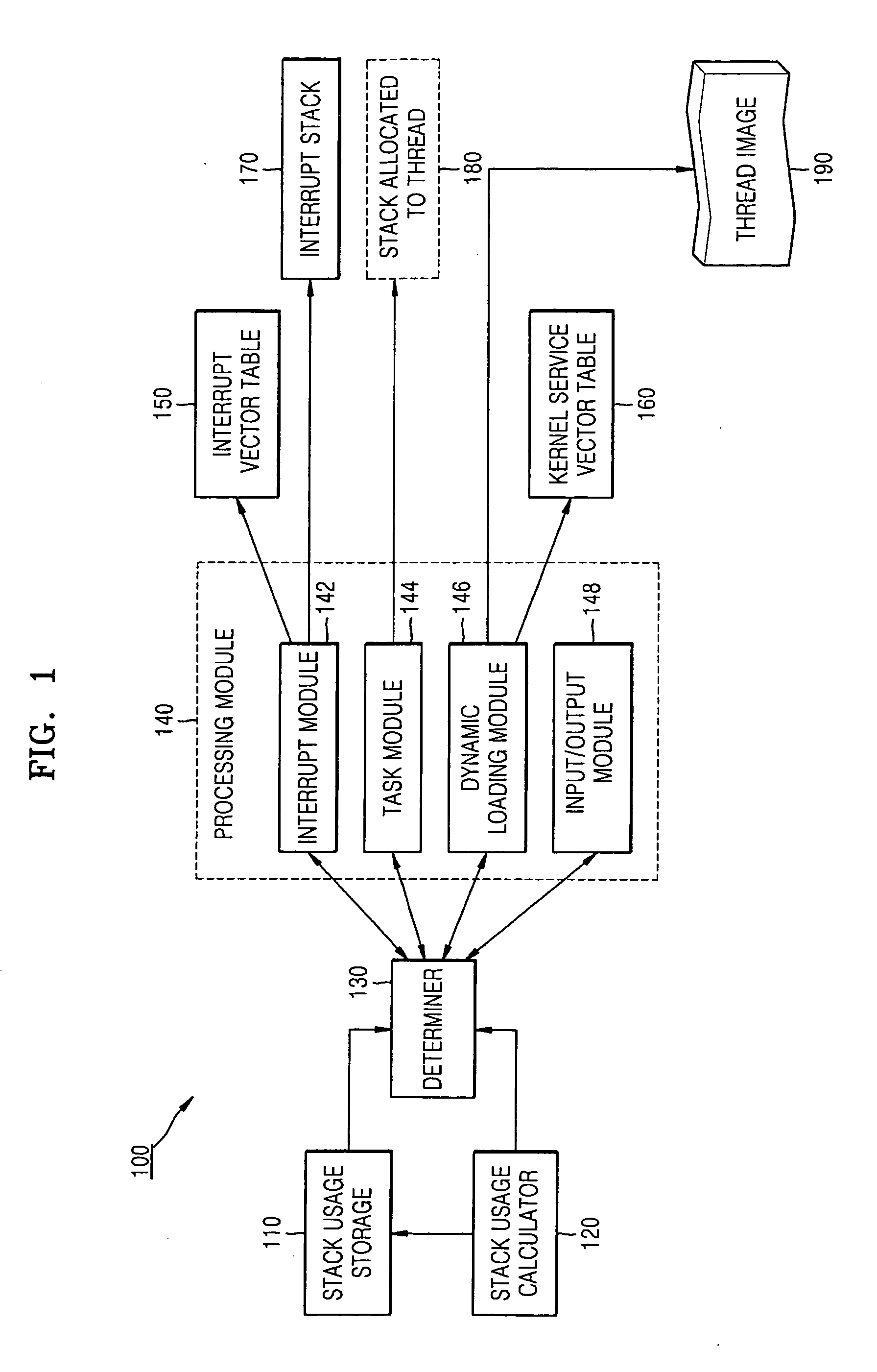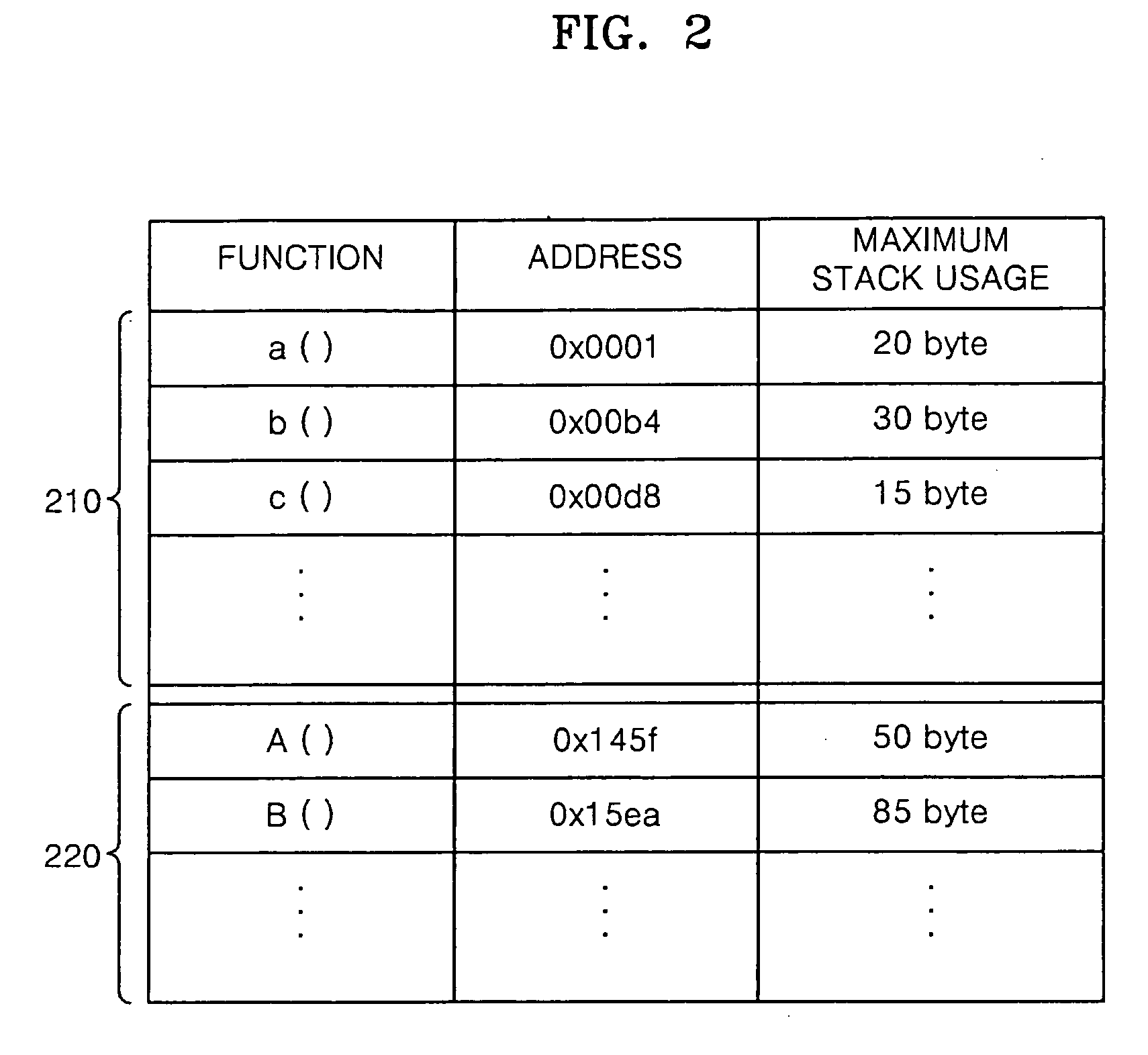Method and apparatus for preventing stack overflow in embedded system
a stack overflow and embedded system technology, applied in the field of embedded systems, can solve the problems of stack overflow, limited memory resources in the entire system, and limited stack regions
- Summary
- Abstract
- Description
- Claims
- Application Information
AI Technical Summary
Benefits of technology
Problems solved by technology
Method used
Image
Examples
Embodiment Construction
[0029]Reference will now be made in detail to the embodiments, examples of which are illustrated in the accompanying drawings, wherein like reference numerals refer to the like elements throughout. The embodiments are described below to explain the present invention by referring to the figures.
[0030]FIG. 1 is a block diagram of an apparatus 100 for preventing a stack overflow of an embedded system, according to an embodiment. Referring to FIG. 1, the apparatus 100 for preventing a stack overflow includes a stack usage storage 110, a stack usage calculator 120, a determiner 130, a processing module 140, an interrupt vector table 150, and a kernel service vector table 160. The stack usage storage 110, the stack usage calculator 120, the determiner 130, and the processing module 140 may be included in a kernel of the embedded system.
[0031]The stack usage storage 110 stores addresses of functions provided from the kernel, a maximum stack usage used by each of the functions, an address o...
PUM
 Login to View More
Login to View More Abstract
Description
Claims
Application Information
 Login to View More
Login to View More - R&D
- Intellectual Property
- Life Sciences
- Materials
- Tech Scout
- Unparalleled Data Quality
- Higher Quality Content
- 60% Fewer Hallucinations
Browse by: Latest US Patents, China's latest patents, Technical Efficacy Thesaurus, Application Domain, Technology Topic, Popular Technical Reports.
© 2025 PatSnap. All rights reserved.Legal|Privacy policy|Modern Slavery Act Transparency Statement|Sitemap|About US| Contact US: help@patsnap.com



